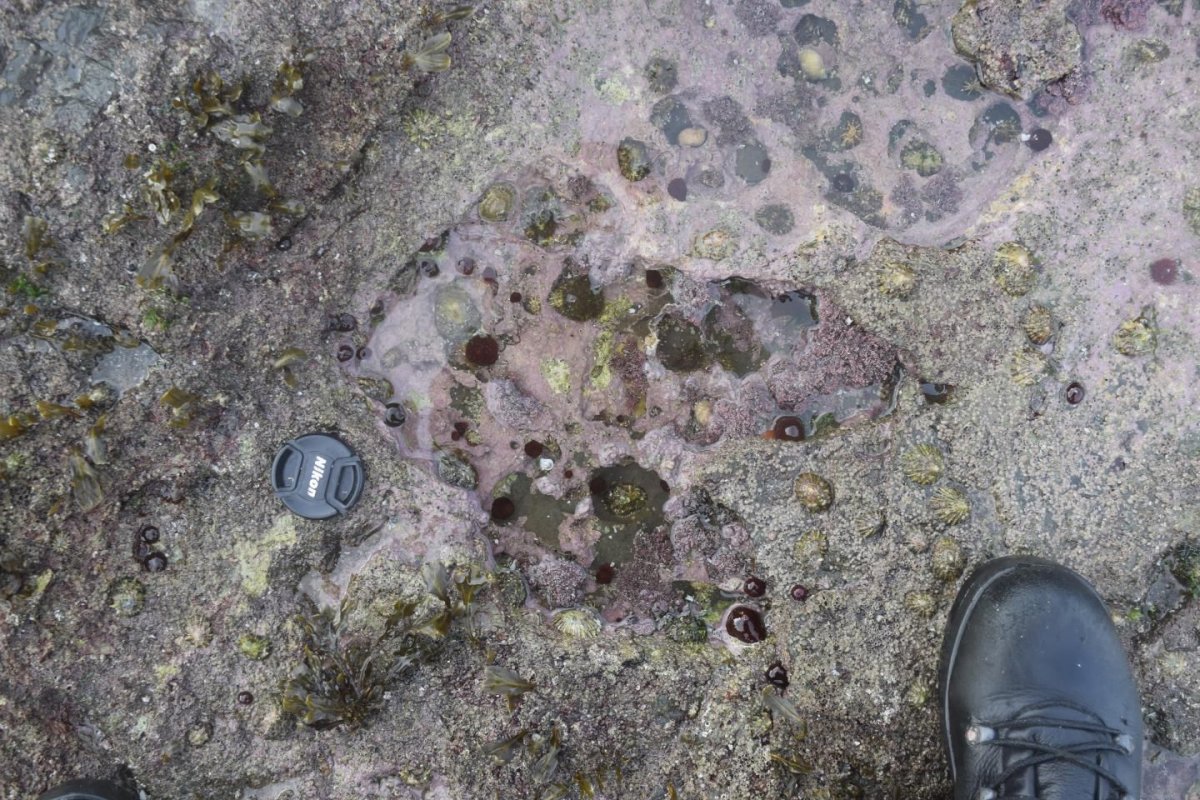Updated | Dozens of large footprints hidden in a muddy, shallow lagoon on the Isle of Skye, Scotland, were made by dinosaurs some 170 million years ago, research has revealed.
The tracks are a rare piece of evidence from the Middle Jurassic period—from which few fossil sites have survived. The discovery sheds light on an important time in the evolution of these great beasts. The research was published in Scottish Journal of Geology.
Nestled in the tidal area of Brother's Point—a stark headland jutting through the northeast coast of the island—the footprints were difficult to study. Tidal conditions, changes to the landscape and the impact of weathering all made it tricky to accurately measure the prints.
Using drone footage and other cameras, the team mapped dozens of footprints and identified two trackways. The shape of the clearest tracks indicated the presence of theropods and sauropods.

Steve Brusatte, a paleontologist from the University of Edinburgh, explained in a statement: "This new site records two different types of dinosaurs…hanging around a shallow lagoon, back when Scotland was much warmer and dinosaurs were beginning their march to global dominance." Brusatte led the field team.
Related: Paleontologists discover new dinosaur species that lived 252 million years ago
Theropods

Theropoda, meaning "wild beast" in ancient Greek, is an order of dinosaurs including species like the famous Tyrannosaurus rex. Older cousins of this beast were found on Skye.
Originally carnivorous, some theropods evolved to become herbivores, omnivores and even insectivores. Most theropod lineages, scientists think, had feathers in some form or another. Birds evolved from certain small theropods and coelurosauria during the Jurassic period.
Sauropods

The word sauropod comes from the Greek for "lizard foot." Once spread widely across the globe, sauropod fossils have been found on every single continent.
Long-necked and tiny-headed, sauropods like the Brontosaurus are famed for their great size. As well as the Brontosaurus, this group includes the Diplodocus and the Supersaurus.
Sauropods include the largest terrestrial animals in history. Certain sauropods are estimated to have stretched some 130 feet long, while others stood as tall as 60 feet. The longest and tallest animals around today—the reticulated python and the giraffe—are tiny in comparison. The python measures up to 23 feet long, while a fully grown giraffe stands at around 18 feet tall.
The sauropods and theropods that left the footprints on Skye weren't quite so impressive—they stood about 6 feet 7 inches tall.
Related: Solenodon: This bizarre venomous mammal survived the asteroid that killed the dinosaurs
The remarkable site sheds light on this important period in the history of dinosaurs. The prints were slightly older than others previously found on the island, extending the known time period for these dinosaurs on the island.
"This tracksite…demonstrates the presence of sauropods in this part of the world through a longer timescale than previously known," said Paige dePolo, a graduate student at the University of Edinburgh, who led the study.
"This site is a useful building block for us to continue fleshing out a picture of what dinosaurs were like on Skye in the Middle Jurassic. The more we look on the Isle of Skye, the more dinosaur footprints we find," said Brusatte.
This article has been updated to include more information about sauropods.
Uncommon Knowledge
Newsweek is committed to challenging conventional wisdom and finding connections in the search for common ground.
Newsweek is committed to challenging conventional wisdom and finding connections in the search for common ground.
About the writer
Katherine Hignett is a reporter based in London. She currently covers current affairs, health and science. Prior to joining Newsweek ... Read more
To read how Newsweek uses AI as a newsroom tool, Click here.








